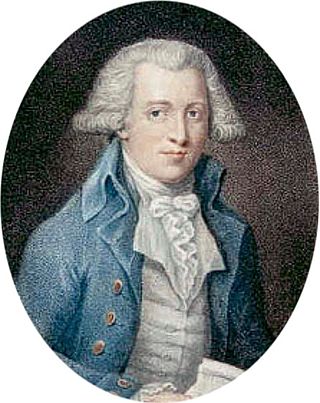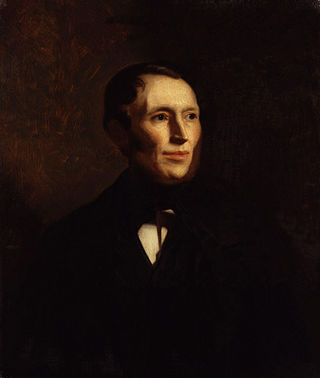Related Research Articles

The Hudson's Bay Company is a Canadian retail business group. A fur trading business for much of its existence, it became the largest and oldest corporation in Canada, and now owns and operates retail stores across the country. The company's namesake business division is Hudson's Bay, commonly referred to as The Bay.

Events from the year 1733 in Canada.

Samuel Hearne was an English explorer, fur-trader, author and naturalist.
Fort Edmonton was the name of a series of trading posts of the Hudson's Bay Company (HBC) from 1795 to 1914, all of which were located on the north banks of the North Saskatchewan River in what is now central Alberta, Canada. It was one of the last points on the Carlton Trail, the main overland route for Metis freighters between the Red River Colony and the points west and was an important stop on the York Factory Express route between London, via Hudson Bay, and Fort Vancouver in the Columbia District. It also was a connection to the Great Northland, as it was situated relatively close to the Athabasca River whose waters flow into the Mackenzie River and the Arctic Ocean. Located on the farthest north of the major rivers flowing to the Hudson Bay and the HBC's shipping posts there, Edmonton was for a time the southernmost of the HBC's forts.

Sir George Simpson was a Scottish explorer and colonial governor of the Hudson's Bay Company during the period of its greatest power. From 1820 to 1860, he was in practice, if not in law, the British viceroy for the whole of Rupert's Land, an enormous territory of 3.9 millions square kilometers corresponding to nearly forty percent of modern-day Canada.

Moose Factory is a community in the Cochrane District, Ontario, Canada. It is located on Moose Factory Island, near the mouth of the Moose River, which is at the southern end of James Bay. It was the first English-speaking settlement in lands now making up Ontario and the second Hudson's Bay Company post to be set up in North America after Fort Rupert. On the mainland, across the Moose River, is the nearby community of Moosonee, which is accessible by water taxi in the summer, ice road in the winter, and chartered helicopter in the off-season.

Joseph Despard Pemberton was a surveyor for the Hudson's Bay Company, Surveyor General for the Colony of Vancouver Island, a pre-Confederation politician, a businessman and a farmer. He was born in 1821 in Dublin, Ireland and died in 1893 in Oak Bay, British Columbia. Joseph Pemberton laid out Victoria's town site, southern Vancouver Island and townsites along the Fraser River. He married Teresa Jane Grautoff and they are the parents of Canadian painter Sophie Pemberton. The town of Pemberton was named after him.

The Prince of Wales Fort is a historic bastion fort on Hudson Bay across the Churchill River from Churchill, Manitoba, Canada.

William Fraser Tolmie was a surgeon, fur trader, scientist, and politician.
Andrew Graham was a Scottish naturalist and a chief factor with the Hudson's Bay Company.

James Murray Yale was a clerk, and later, a Chief trader for the Hudson's Bay Company, during the late North American fur trade, as they were competing with the Montreal based North West Company and the American Fur Company of John Jacob Astor. During his career, he would negotiate and compete with Americans, French Canadians, Russians, and Indians for market shares. He is best remembered for having given his name to Fort Yale, British Columbia, which became the city of Yale during the gold rush, and later on, the Yaletown district of downtown Vancouver.

William Kennedy was a Canadian fur trader, politician, and historian.

Archives of Manitoba, formerly the Provincial Archives of Manitoba until 2003, is the official government archive of the Canadian province of Manitoba. It is located at 200 Vaughan Street in Winnipeg, where it has been established since January 1971.
Thomas Bird was a Hudson's Bay Company factor from 1737 to 1739 at Fort Albany in present-day Ontario, Canada.
Richard Alan Baker is an American business executive. He is the Governor, CEO, and Executive Chairman of Hudson's Bay Company (HBC) and executive chairman of each of HBC's eight portfolio companies. He is also the owner of National Realty and Development Corp. (NRDC), a US-based private real estate development and investment company, and is the Chairman of the Retail Opportunity Investments Corp. (ROIC), a public real estate company.
Asleep by the frozen sea is a phrase coined by Joseph Robson to describe the policy of the Hudson's Bay Company (HBC) from its foundation in 1670 until the establishment of its first inland post in 1774. Unlike the French who sent Coureurs des bois inland to trade, the HBC built posts on Hudson Bay and waited for the Indians to bring furs to them. The decision to abandon this policy and move inland gradually turned the HBC into an informal government for western Canada and led ultimately to the confederation of western and eastern Canada.
James Isham (1716–1761) was chief factor (master) at both York Factory and Fort Prince of Wales in Canada during the mid-1700s. He kept detailed journals that described life in the region, including flora and fauna that were unknown to people in England at that time. His journals are important historical documents and he is well known to scholars of the fur trade in Canada during the early years of the Hudson's Bay Company (HBC).
Moses Norton was a Hudson's Bay Company administrator who was chief factor of Fort Prince of Wales from 1762 until his death in 1773. A controversial figure throughout his life, he notably commissioned explorer Samuel Hearne's three expeditions in 1769–1772, which led to the first European discovery of the Coppermine River and the northern coast of Canada.
Robert Pilgrim was an employee of the Hudson's Bay Company, from 1730 to 1750. Pilgrim originally worked as a steward on Hudson's Bay Company ships. In 1735 he given command of a small local Hudson's Bay Company vessel.
References
- 1 2 3 4 5 6 Glyndwr Williams. "ROBSON, JOSEPH, stonemason, surveyor, engineer, critic of the HBC; fl. 1733–63". Dictionary of Canadian Biography . Retrieved 2020-02-03.
Robson's book was of prime importance, since it was the earliest to reflect first-hand knowledge of service with the HBC, and was written by someone who had spent six years in Hudson Bay.
- ↑ Gordon Goldsborough. "Memorable Manitobans: Joseph Robson (?-?)". Manitoba Historical Society . Retrieved 2020-02-03.
It was he who wrote, 'The Company have for eighty years slept at the edge of a frozen sea.'